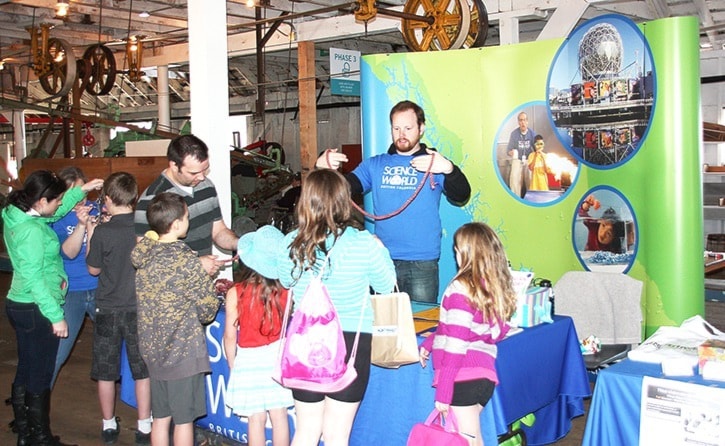Within the confines of a classroom, it's pretty difficult to find and dissect a salmon, build stable structures with just flimsy paper, make your very own windmill or watch a fisheries canning process in action.
That's why North Pacific Cannery and an anonymous donator teamed up to bring Vancouver-based Science World to Port Edward and Prince Rupert last week, bringing science to life as part of their Community Science Celebration.
"[It] used to be funded through the provincial government. Unfortunately it was lost a few years ago, but it was an anonymous donor that knew that this site was available and interested in doing the celebration that made a donation so Science World could come up," said North Pacific Cannery operations manager Stephanie Puleo.
Throughout the rustic, boarded and majestic halls of the 125 year-old site, organizations such as WWF Canada, the Vancouver Aquarium, Ecotrust Canada, the Prince Rupert Port Authority, Northern Health, Northwest Community College and the Prince Rupert Salmon Enhancement Society set up booths and activities for kids and adults alike to take part in, to help the North Coast area's science come to life.
"At some of our tables today, we have Charles Hays Secondary students and a teacher that are volunteering with us ... to support the site," said Puleo, adding that the representatives from Science World have been visiting area-schools, and giving science shows to promote Sunday's free event at the cannery.
Joann Cogdan, manager of community outreach programs at Science World, and Peter Carlone, a science facilitator, were two such delegates from Vancouver's storied science centre to make the trip to Prince Rupert and they imparted wisdom on the attendees.
"The reason I like it is because this is how I learn," said Carlone.
"I wish I could go back in time and tell my teachers that I needed to learn this way. It's very hands-on, it's practical. You're really seeing the results, especially with the shows, you're seeing the science rather than being told about it."
A lot of Science World's activities were physics-based and designed to let kids trick their friends back home with the 'make-and-take' projects they worked with at the booths.
"One of the main reasons why we originally got funding to do outreach in the first place was because there's so many different types of science going on around the province," said Cogdan.
"What's going on in Vancouver isn't what's going on up here and it is not what's going on in Fort St. John, and so we wanted to introduce the community to the science that's going on in their community ... they've picked up something that's going on right on the island, whether it's forestry and fisheries, or more gasoline- and oil-focused."
